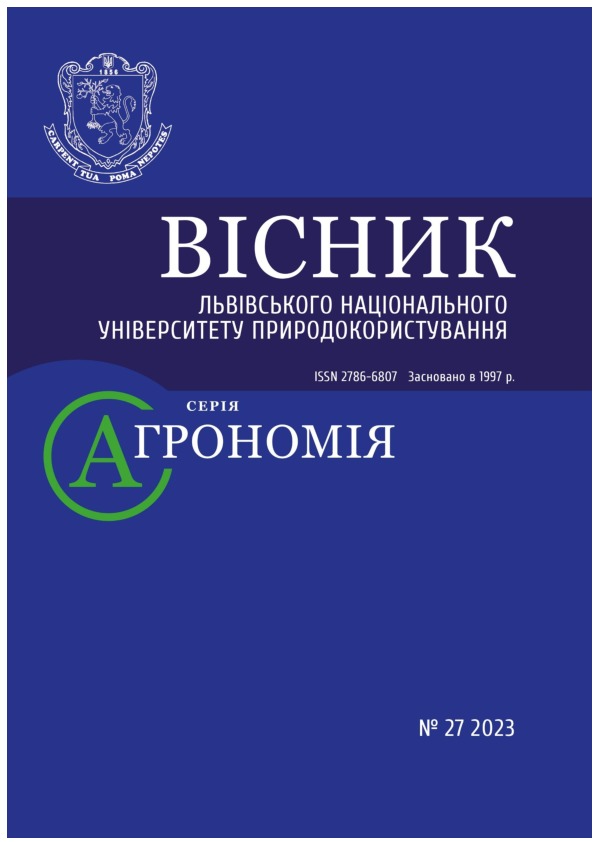id: 35345
Title: Content of heavy metals in the phytomass of the natural meadow ecosystems of Vinnytsia region under general background pollution and as a result of anthropogenic transformation of land
Authors: Titarenko O.
Keywords: natural meadows, phytomass, soil, lead, cadmium, zinc, copper, accumulation coefficient, hazard coefficient, fertilisers, soil cultivation
Date of publication: 2024-03-15 08:13:55
Last changes: 2024-03-15 08:13:55
Year of publication: 2023
Summary: Meadows as plant ecosystems of the Forest-Steppe zone are secondary in origin. They were formed on the site of indigenous (primary) vegetation types – forest or marsh ecosystems – after being transformed by humans to meet the needs of agriculture or livestock. In ancient times, the areas that are now occupied by meadows were mostly covered by forests or swamps. With population growth and livestock development, these forests were cut down, swamps drained, and the land was used for agricultural production as pastures and hayfields. Meadows on the plains of former forest or marsh ecosystems are unstable dynamic phytocoenoses in different stages of succession. Therefore, dominant species` botanical composition and projective cover change rapidly, requiring constant human intervention to maintain their high productivity. Following the principles of sustainable development, one of the most urgent tasks is to provide the population with a sufficient amount of high-quality and safe food of both plant and animal origin. It is known that the quality and safety of food products are directly dependent on the environmental conditions of food raw material production. Vegetation of natural fodder lands is an important element of livestock production, which is characterized by low cost compared to cultivated lands. However, in some areas, natural fodder lands undergo a strong anthropogenic load in technogenesis, leading to soil contamination with various toxicants, particularly heavy metals such as Pb, Cd, Zn, and Cu. The main sources of pollution of natural fodder lands are industry, motor vehicles, chemicalisation of the crop production sector, and others. Under such conditions, the use of phytocoenoses as feedstock for both domestic and wild animals increases the risk of heavy metals entering their bodies, which threatens the production of safe and high-quality products, and contaminated soils may be withdrawn from agricultural use. The study aimed to determine the levels of accumulation of Pb, Cd, Zn, and Cu in the ecosystems of natural fodderlands under different anthropogenic loads in the conditions of Eastern Podillia in Vinnytsia region.
URI: http://81.30.162.23/repository/getfile.php/35345.pdf
Publication type: Статті у наукових фахових виданнях України (Copernicus та інші)
Publication: Вісник Львівського національного університету природокористування «Агрономія». 2023. № 27. С. 32-40. DOI: https://doi.org/10.31734/agronomy2023.27.032
In the collections :
Published by: Адміністратор
File : 35345.pdf Size : 1079497 byte Format : Adobe PDF Access : For all

| |
|
|